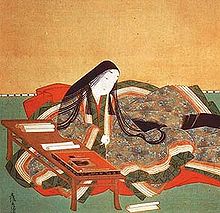

A few days ago, I invited Mike Sugimoto, a Japanese native and Assistant Professor of Japanese Studies at Pepperdine University, to join our conversation on Japanese folktales. If the previous qualifications weren’t enough, he is also a Christian, a friend and cohort of Francis Schaeffer, and he holds his Ph.d. from Cornell in Modern Japanese Literature and Auesthetic Philosophy.
So, without further ado, here are Dr. Sugimoto’s thoughts on our conversation thus far:
I think the group-mentality of the Japanese is largely true, although not sure this is any greater than Europeans; it may be that we Americans are the anomaly here. Still, the continued mystery is why so much resistance to the gospel in Japan, compared to, say, other East Asian cultures, such as China or South Korea. Perhaps the way to understand these Confucian societies is what sociologists call “high context,” ie individuals derive their meaning and place from a much longer, broader background than Americans usually do, especially now. This makes USA very dynamic, but also very fragmented. Much of the rigidness of Japanese society derives from this and the entire infrastructure of education reinforces this, as does cultural frameworks, such as Confucianism and/or Buddhism, as well as practical issues related to densely populated space, as in Europe.
Put differently, history “weighs” upon the Japanese psyche, as it does in Europe, but as it largely does not in America, thus our fabled optimism, can do spirit. We’ve actually been around for a long time, as well, but these cultural values became our national character at some point.
Beauty and aesthetics – the ritual and detail to beauty – has become a part of everyday life in Japanese culture and is the reason for much admiration among Western aesthetes who long for that level of aesthetic permeation of life in Europe and America. This comes originally from the high court, noble culture and its literary and visual arts production which as filtered down into the culture at large over the centuries. Buddhism dovetailed with this aesthetic, further ingraining these practices through rituals like the tea ceremony, ornamental arts, etc.
Japanese literature is relatively easy to introduce to children because of the dominance of lyric poetry from its earliest origins back in the 8th century. These poems – normally the haiku which came later – are in fact introduced to European and American children because of brevity, but they are very sophisticated forms with myriad rules. However, at least on a superficial level, children can read and write 17 syllable and 31 syllable poems; the latter of which follows a 5- 7- 5- 7 –7 pattern, more or less.
I attach the Japan Society’s bibliography of Japanese children’s literature for perusal. Japanese literature is one of the world’s greatest treasure troves of writing and criticism, surpassing English literature in scope, I would say. More recently, a lot more attempts to make this accessible to the English speaking world has been initiated by Columbia University, as well as organizations like the Japan Society. Of course, eventually, the world became familiar with Japanese anime (animation), but that is a whole additional subject.
One additional point your readers might find interesting is that Japanese literature features a lot of “losers,” medieval battle narratives like The Tale of the Heike written from the perspective of the losing side. This is generally true of Japanese culture, which for all its competition and emphasis on excellence does not often build narratives around winners. This is in fairly start contrast to, say, The Little Engine That Could.
.pdf DOWNLOAD: Japanese Literature List for Kids
Check back next Monday for our Study Guide for this series. Til then, above is the attachment Dr. Sugimoto referred to; it’s an extensive list of Japanese stories for kids. Just for the record, this isn’t my endorsement of any of them. Just a list Dr. Sugimoto passed on for you to use at your discretion.
If you enjoyed this post, you might be interested in our interview with Dr. Sugimoto on whether ereaders are safe for kids. Or Janie’s post on another fascinating culture, Nice Jewish Girls.
Stay Up to Date!
Get the information you need to make wise choices about books for your children and teens.
Our weekly newsletter includes our latest reviews, related links from around the web, a featured book list, book trivia, and more. We never sell your information. You may unsubscribe at any time.
Support our writers and help keep Redeemed Reader ad-free by joining the Redeemed Reader Fellowship.
Stay Up to Date!
Get the information you need to make wise choices about books for your children and teens.
Our weekly newsletter includes our latest reviews, related links from around the web, a featured book list, book trivia, and more. We never sell your information. You may unsubscribe at any time.
FREE Bible Guide!
Get a guide to the Best Bibles for Children and Teens. Perfect for an Easter gift.
We'd love to hear from you!
Our comments are now limited to our members (both Silver and Golden Key). Members, you just need to log in with your normal log-in credentials!
Not a member yet? You can join the Silver Key ($2.99/month) for a free 2-week trial. Cancel at any time. Find out more about membership here.

